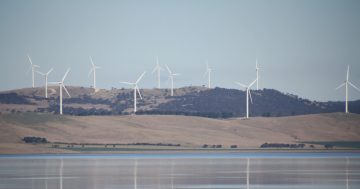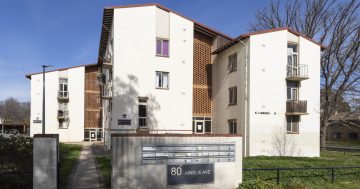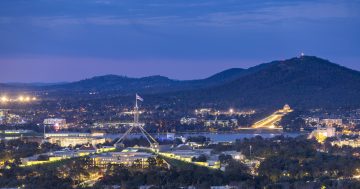
Canberra’s extreme weather can equal extreme energy bills for residents in outdated housing. Photo: File.
We’re all breathing a little easier under the cool spell that relieved the capital from the recent heatwave, but spare a thought for those who had to hide away in darkened bedrooms, or the relative cool of the bathroom as the climbing mercury reminded us what a Canberra summer can be like.
It’s been a mild one compared to last summer’s inferno, but the hot boxes remain, and not just old guvvies. There are still plenty of modern units that can be like ovens.
It’s a reminder that developers, builders and landlords have a responsibility to upgrade Canberra’s housing stock to be climate-ready because there are lives at stake. Heat remains one of Australia’s biggest killers, but even if air-con is available the cost can mean some won’t even switch it on.
Which is why the ACT Government’s package of climate change measures, including establishing a $150 million fund for its Sustainable Household Scheme and establishing a $50 million fund for a Vulnerable Household Energy Support Initiative, is welcome.
They come on top of a range of rebates and subsidies already available to businesses and individuals.
The Labor-Greens Government now needs to press on with making minimum energy efficiency standards for rental properties law, as promised under the Parliamentary Agreement.
The agreement commits the government to enacting legislation this year, with progressive implementation over the coming years.
For those in the rental market suffering through Canberra’s frigid winters and searing summers on the wrong side of the energy divide, it can’t come soon enough.
Landlords have every incentive to bring the properties into the era of sustainability, including turning off the natural gas mains and switching to smart electric appliances so their tenants don’t have to break into a cold sweat every quarter when the bills arrive.
Governments can use both carrots and sticks to achieve their ends, but it is much better if the private sector gets out in front and leads by example.
Developers cop a lot of criticism in this town, but a recent DA showed just how one is being a flagbearer for designing and building housing that will suit the Canberra climate and not cost residents the earth.
For POD Projects’ Paul O’Donnell it makes perfect business sense to do the right thing.
”It’s what people want,” he says. And he wants to take it to the next level.
High EERs, no gas, solar power, double glazing, measures to reduce the heat island effect such as reflective materials and landscaping, including big shade trees, are all included.
POD is even looking at a dedicated solar farm to supply residents with low-cost electricity. Other developers take note.
O’Donnell also talks about future-proofing the development, including charging points in the car-parks as the electric car trickle becomes a rush.
This is real strategic thinking of the kind we need from government.
Unfortunately, while the states and territories, particularly the ACT, adopt more aggressive goals to lower emissions and combat climate change, Prime Minister Scott Morrison is more like King Canute trying to hold back the tide.
Of course, old Canute was making a point, but Morrison seems intent on trying to salvage as much as he can from the fossil-fuel era just as the world looks set to accelerate action to decarbonise.
The new Biden administration has put the US back in the climate change game, and Australia is likely to come under pressure to lift its performance.
It would be better for the Australian Government to read the room, take a leadership position and as a supposed supporter of free enterprise, help business take us forward.
But real change can happen at street level, and that means the ACT ensuring all its people are housed appropriately, and new developments give people what they want, and need.





















